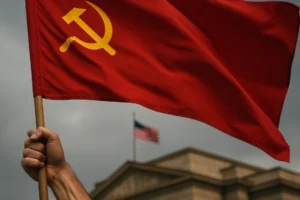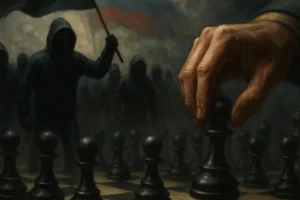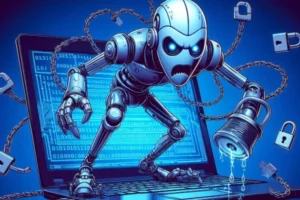How the Machine Suppresses Truth
Our best decisions are typically rooted in accurate information. However, when critical information about corruption, public health risks, or institutional failures are silenced, society is left uninformed and unprepared to address real threats. This manufactured ignorance can lead to unsafe policies, unchecked abuses of power, and the erosion of public trust in essential systems. Moreover, individuals who challenge false narratives often face retaliation, creating a chilling effect that discourages whistleblowing and undermines accountability—further compromising societal security and personal safety. If we want better outcomes, we need a better approach. If we want to protect ourselves, we need to understand what we are up against. Can you handle the truth?
Of course, suppression of inconvenient truths is not a new phenomenon. Throughout history, entrenched power structures have worked systematically to stifle dissent, not merely through brute force but through a methodical process of escalation. Unfortunately, today, with mass and social media, this contortion and silencing of truth is easier than ever.
You’ve likely seen it with your own eyes and didn’t know it. In fact, you may have wondered why a particular narrative is being dismissed outright without substantive engagement. That’s usually a sign that it is entering the first stage of suppression. If you didn’t hear anything after that, then you probably saw a successful operation. Of course, once you see how it’s done, you’ll likely begin to see it everywhere.
Allow me a moment to share The Escalatory Suppression Model with you. Also sometimes called the Suppression Cascade, this model outlines five distinct stages through which truth is effectively neutralized: Dismiss, Marginalize, Censor, Attack, and Eliminate. This model explains how power structures, including the media, corrupt politicians, educational institutions, government and health agencies, mega-corporations, and central banks, coordinate to maintain control over public discourse and suppress revelations that threaten their authority. Let’s examine the stages more closely.
The Five Stages of Suppression
- Dismiss – Initially, conflicting truths are ignored or brushed aside as irrelevant, misguided, or unworthy of serious consideration. This stage relies on the assumption that if a truth is not acknowledged, it will fail to gain traction. The mainstream media and institutional gatekeepers exercise this tactic by selectively covering—or refusing to cover—certain perspectives. The goal is to make inconvenient facts seem non-existent or too fringe to be worthy of discussion.
- Note: Early warning signs of this stage include a total media blackout or dismissive language such as “fringe theory,” “discredited claim,” or “out of step with consensus.” You may initially see the buzz on social media and a complete avoidance in the legacy media.
- Marginalize – If the truth persists, those promoting it are pushed to the fringes, labeled as extremists, contrarians, quacks, traitors, or outsiders to discredit their viewpoints. At this stage, truth-seekers are ridiculed and characterized as conspiracy theorists, unqualified voices, or ideologically motivated agitators. Marginalization ensures that even if the public becomes aware of the truth, they will dismiss it based on the reputational damage inflicted upon its proponents.
- Note: The transition from dismissal to marginalization typically occurs when a claim gains enough traction that ignoring it becomes ineffective. This shift is often signaled by coordinated hit pieces, fact-checker articles, and the repetition of ridicule across media outlets.
- Censor – As the challenge grows, efforts are made to silence or restrict the dissemination of truth through institutional or social control mechanisms. This stage involves social media bans, algorithmic suppression, demonetization, and legal restrictions aimed at making it difficult for truth to reach an audience. Censorship is often justified under the guise of “misinformation control” or “public safety.” At this point, evidence supporting the suppressed position may become difficult to access, and entire conversations are shut down under the justification of preventing harm.
- Attack – When censorship fails, or the truth gains traction, direct hostility ensues—personal attacks, legal actions, or organizational retaliation. Those who refuse to be silenced face career destruction, lawsuits, or orchestrated smear campaigns. Political figures, academics, and whistleblowers who expose corruption or deception frequently encounter this level of aggression. At this stage, efforts shift from silencing an argument to making an example of dissenters, warning others of the consequences of speaking out. Legal battles, professional blacklisting, and targeted character assassinations are key markers of this phase.
- Eliminate – The final stage seeks to remove the threat entirely, whether through character assassination, career destruction, banishment, de-platforming, or, in extreme cases, physical suppression. Whistleblowers and dissidents may find themselves permanently exiled from their professions, stripped of their livelihoods, or worse, subjected to state-sanctioned force. If the suppression effort reaches this level, the target is not just neutralized but fully removed from public discourse. Historical examples show that this stage often coincides with legislative crackdowns, surveillance expansion, and, in authoritarian regimes, imprisonment or assassination.
Before we go on, does any of this sound familiar? If you’ve been paying attention over the last several years, there is a good chance that you will be able to identify several instances where this model was likely deployed. The question then becomes, what are they hiding? Perhaps, more importantly, why?
Control Through Narrative Management
Understand that the Escalatory Suppression Model is not merely about silencing opposition—it is about ensuring that the truth remains buried. The institutions that typically employ this model—media conglomerates, state-run educational institutions, corporate monopolies, political elites, and financial institutions—rely on something called narrative dominance to prevent the erosion of their control. After all, allowing the truth to flourish would likely expose contradictions in their messaging, undermine public trust, and potentially dismantle their influence.
Recognizing the Model in Action (A Hypothetical Case Study)
Consider a researcher who publishes data revealing corruption within a major pharmaceutical company.
- Dismiss: The mainstream media ignores the study, while industry leaders claim the findings are unverified or that the consensus is something to the contrary.
- Marginalize: The researcher is then labeled a “quack” by paid-for established professionals, and their credentials are questioned or even threatened.
- Censor: Social media platforms flag discussions about the study as misinformation, limiting its reach. Social media outlets may even begin banning those who distribute the information.
- Attack: The researcher loses funding, faces institutional backlash, and is accused of ethical violations.
- Eliminate: The researcher is blacklisted from academic journals, barred from speaking engagements, and unable to secure employment in their field.
By the time the public notices the suppression, it’s probably too late—the truth has been buried, and the narrative remains intact. Usually, the damage is done by the time the people begin to discover the truth. Even then, those suffering from Epistemic Rigidity will likely refuse to see the truth for what it is, even as the supporting evidence mounts.
Essential Tools of Suppression
Propaganda and astroturfing play vital roles in the suppression process. Understanding “how” allows us an opportunity to recognize the effort early on.
- Propaganda reinforces the official narrative through repetition, emotional appeal, and selective omission of counterarguments. Only getting one side of the story is a red flag. This ensures that the suppressed truth is framed negatively before the public even has a chance to evaluate it critically. In many ways, this step feeds Epistemic Rigidity, and more importantly, it motivates those who have attached their identity to authority to play along.
- Astroturfing creates the illusion of grassroots consensus by using paid influencers, bots, and coordinated media efforts to manufacture public opinion. On the other hand, when truth-seekers appear to be outnumbered or ridiculed by a supposed majority, they are less likely to persist in their opposition. Moreover, when they feel outnumbered, they are likely to remain silent in an effort to avoid confrontations. You can learn more about this by watching this Ted Talk by Sheryl Attkisson.
Why People Fail to See Suppression in Action
The biggest reason people fail to see suppression in action is because they don’t want to. The ramifications of this reality are simply too much for most people to come to terms with. Indeed, the truth can be extremely heavy.
Another reason is that people often believe suppression only happens in authoritarian regimes or with the “other guy,” ignoring subtler forms of control in democratic societies and forgetting that we are more likely to be misinformed by “our side.” Most simply don’t want to face such betrayal.
Of course, even when the Escalatory Suppression Model is evident, many fail to recognize it due to Epistemic Rigidity—the psychological resistance to discarding inaccurate information. Biases such as the Einstellung effect, the Einstein Effect, confirmation bias, anchoring bias, and motivated reasoning (among others) prevent individuals from acknowledging the systematic suppression of truth. Similarly, those conditioned to trust legacy institutions are particularly susceptible to cognitive dissonance when confronted with evidence of suppression, leading them to rationalize or even support the silencing efforts. In fact, let me provide you with a recent example of what I’m talking about.
At a recent United Nations panel, Imran Ahmed, CEO of the Center for Countering Digital Hate, openly declared that “Internet censorship is the key to winning” on issues ranging from climate change and gender policy to abortion, DEI, and war (full video here). In my opinion, his statement is not just an admission of intent but a clear indicator of how suppression progresses beyond dismissal and marginalization to full-scale censorship. Understand that when debate is no longer an option and controlling discourse becomes the strategy for securing ideological victories, the next stages of suppression—attack and elimination—are never far behind. This brazen call for censorship exposes a dangerous reality: those who seek to control information do not aim to merely persuade – they aim to silence, ensuring that only sanctioned narratives remain. But where is the outcry? There doesn’t even seem to be a conversation about this.
Reclaiming the Truth
Understanding the Escalatory Suppression Model is crucial for resisting manipulation, as it directly impacts access to truth, informed decision-making, and accountability. If you take anything away from this article, let it be the understanding that when legitimate concerns are dismissed, marginalized, censored, attacked, or eliminated, society becomes vulnerable to deception, financial exploitation, and policies that threaten safety and freedom. Recognizing this suppression is the first step toward ensuring transparency in governance, media, and corporate influence.
The second step would have to be strategic resistance—actively countering suppression by seeking independent sources, distributing quality information, fostering open discussions, and supporting platforms that resist censorship. Of course, this type of resistance requires more than awareness; it demands engagement in truth-seeking efforts and the courage to challenge prevailing narratives.
The third step is probably intellectual resilience—the ability to challenge personal biases, verify claims through contrastive inquiry, and resist social pressure. However, this goes beyond consuming suppressed information; it involves critically evaluating media narratives, amplifying suppressed voices, and establishing decentralized networks where truth can persist despite systemic suppression. And sometimes, this means elevating the voices you might not totally agree with.
Granted, achieving intellectual resilience is often difficult. However, it is worth the effort. Contrastive Inquiry can help because it strengthens intellectual resilience by systematically examining suppressed narratives against dominant ones. In other words, don’t deny yourself the opportunity to examine such narratives. By contrasting mainstream narratives with suppressed perspectives, one can usually detect contradictions and identify which ideas are being systematically suppressed. Identifying contradictions, questioning assumptions, and exploring alternative explanations help individuals break free from epistemic rigidity and recognize suppression tactics, propaganda, and astroturfed consensus.
Unfortunately, Contrastive Inquiry is not always a comfortable process. My advice here is to be brave and try it anyway because intellectual resilience hinges on your willingness to seek accuracy. In other words, challenging one’s own biases, questioning authority, and refusing to passively accept managed consensus are essential to disrupting suppression. Only through awareness, engagement, and critical inquiry can individuals reclaim their ability to think freely, thereby securing themselves and their liberty.
Learn more about Contrastive Inquiry
Learn more about Epistemic Rigidity
A Necessary Disclaimer
Understand that not all suppressed ideas are true, and not all conspiracy theories hold water. Some claims are, indeed, based on speculation, misinformation, or deliberate deception. However, history has shown that many narratives initially dismissed as “conspiracy theories” were later validated as legitimate concerns. You must learn how to think for yourself.
A prime example is the Wuhan lab leak hypothesis. Initially ridiculed and labeled as misinformation, the theory was aggressively dismissed, marginalized, censored, and attacked. Those who entertained the possibility faced deplatforming and professional consequences. Yet, as more evidence emerged, the lab leak scenario gained credibility, with government agencies and scientific institutions acknowledging it as a plausible explanation for COVID-19’s origins. So, what’s the motive? Well, it’s hard to say, but those who were responsible and played a part were not held accountable, were they? Just understand that what was once derided as a fringe conspiracy is now an accepted possibility in mainstream discourse. So, what happens to the people involved? Nothing – because now it’s a confusing mess.
Understand that this happens more often than any of us might like to admit. A few examples might include the revelations about NSA mass surveillance exposed by Edward Snowden, which government agencies initially denied while attacking and essentially eliminating Snowden; the Pentagon’s eventual admission of unexplained aerial phenomena (UAPs) after decades of dismissing UFO reports; the early concerns about the health risks of smoking, which tobacco companies actively suppressed before being universally accepted as fact; the acknowledgment of the Gulf of Tonkin incident being proactively misrepresented to justify U.S. involvement in Vietnam; the once-dismissed claims that sugar industry lobbying influenced dietary guidelines, shifting blame to fats; the suppression of missing and murdered Indigenous women and girls; Monsanto’s “intelligence fusion center” that monitored and discredited journalists and activists critical of their practices being ignored; the October 14th storming of the Department of the Interior by liberal activists, which was largely ignored by mainstream media (left and right) despite its clear parallels to other politically charged government building breaches that received widespread condemnation; and the suppression of early evidence linking opioid manufacturers to the addiction crisis, which was later confirmed through lawsuits and congressional investigations. And on and on. Indeed, it’s everywhere.
This is precisely why skepticism toward suppression is warranted and justified. However, you have to know what you’re looking for to see it for what it is. Nonetheless, while some theories may be unfounded, the process of escalation—Dismiss, Marginalize, Censor, Attack, and Eliminate—is often a very strong indicator that a narrative threatens established interests. So, rather than blindly accepting or rejecting information provided to you by the machine, the key is to engage in Contrastive Inquiry, systematically weighing the evidence, questioning the dominant narrative, and considering what is being suppressed – and why.
Remember, the goal isn’t to accept every alternative perspective as truth but instead to recognize that suppression itself can be a major red flag—one that typically demands deeper investigation.
… shake off all the fears and servile prejudices under which weak minds are servilely crouched. Fix reason firmly in her seat and call to her tribunal every fact, every opinion. Question with boldness even the existence of a god; because, if there be one, he must more approve the homage of reason than that of blindfolded fear. I repeat that you must lay aside all prejudice on both sides and neither believe nor reject anything because any other person, or description of persons, has rejected or believed it. Your own reason is the only oracle given you by heaven, and you are answerable not for the rightness but uprightness of the decision.
Extract from Thomas Jefferson to Peter Carr – Paris Aug. 10. 1787.
Want to learn more about how people can be manipulated? Look for The Five Stages of Ideological Subversion (by Yuri Bezmenov). Bezmenov, a former Soviet defector, described a different but related ideological process involving demoralization, destabilization, crisis, and normalization, which touches on suppression techniques. I made a video about this here. You might also like The Century of the Self, a documentary by the BBC. Or better yet, you might want to explore Herman & Chomsky’s Propaganda Model. Their book Manufacturing Consent outlines how mass media marginalizes dissenting voices and reinforces dominant ideologies through filters like ownership, advertising, and control of discourse.




